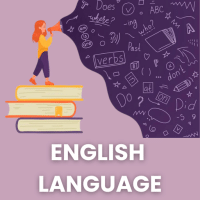Grade 7 Exam > Grade 7 Questions > What is the primary reproductive part of a pl...
Start Learning for Free
What is the primary reproductive part of a plant?
- a)Leaf
- b)Stem
- c)Root
- d)Flower
Correct answer is option 'D'. Can you explain this answer?
Verified Answer
What is the primary reproductive part of a plant?a)Leafb)Stemc)Rootd)F...
The flower is the primary reproductive part of a plant. It contains the organs necessary for sexual reproduction, including the stamens (male organs) and pistils (female organs).
View all questions of this test
Most Upvoted Answer
What is the primary reproductive part of a plant?a)Leafb)Stemc)Rootd)F...
The correct answer is option d because:-
The primary reproductive part of a plant is the flower. Flowers contain both male and female reproductive organs and are responsible for sexual reproduction.
Flowers often have showy petals and fragrances to attract pollinators like birds, bees, and other insects. The beauty and fragrance of flowers evolved to attract pollinators, not to please humans.
Flowers are also important for plant identification. The system of plant nomenclature used today is based on flowers, and flowers are the part of the plant that is least affected by environmental changes.
In some plants, roots can also be a means of reproduction. For example, new plants can arise from creeping horizontal stems called runners in grass and jasmine. This type of reproduction is called vegetative propagation.
The primary reproductive part of a plant is the flower. Flowers contain both male and female reproductive organs and are responsible for sexual reproduction.
Flowers often have showy petals and fragrances to attract pollinators like birds, bees, and other insects. The beauty and fragrance of flowers evolved to attract pollinators, not to please humans.
Flowers are also important for plant identification. The system of plant nomenclature used today is based on flowers, and flowers are the part of the plant that is least affected by environmental changes.
In some plants, roots can also be a means of reproduction. For example, new plants can arise from creeping horizontal stems called runners in grass and jasmine. This type of reproduction is called vegetative propagation.
Free Test
FREE
| Start Free Test |
Community Answer
What is the primary reproductive part of a plant?a)Leafb)Stemc)Rootd)F...
Primary Reproductive Part of a Plant
The correct answer to the question is option 'D', the flower. Here’s a detailed explanation of why the flower is considered the primary reproductive part of a plant:
Function of Flowers
- Flowers are the reproductive structures of angiosperms (flowering plants).
- They facilitate reproduction by producing gametes (male and female reproductive cells).
Parts of a Flower
- Stamens: These are the male reproductive parts that produce pollen (the male gamete).
- Pistil: This is the female reproductive part that contains the ovary, which houses the ovules (the female gamete).
Pollination Process
- During pollination, pollen from the stamen is transferred to the pistil, leading to fertilization.
- Once fertilization occurs, seeds develop in the ovary, allowing for the next generation of plants.
Importance of Flowers
- Flowers attract pollinators (like bees and butterflies) through their color, scent, and nectar.
- This interaction enhances genetic diversity, which is crucial for plant evolution and survival.
Conclusion
In summary, the flower is vital for plant reproduction, making it the primary reproductive part. Other parts of the plant, such as leaves, stems, and roots, serve essential roles in growth, support, and nutrient absorption, but they do not directly participate in the reproductive process.
The correct answer to the question is option 'D', the flower. Here’s a detailed explanation of why the flower is considered the primary reproductive part of a plant:
Function of Flowers
- Flowers are the reproductive structures of angiosperms (flowering plants).
- They facilitate reproduction by producing gametes (male and female reproductive cells).
Parts of a Flower
- Stamens: These are the male reproductive parts that produce pollen (the male gamete).
- Pistil: This is the female reproductive part that contains the ovary, which houses the ovules (the female gamete).
Pollination Process
- During pollination, pollen from the stamen is transferred to the pistil, leading to fertilization.
- Once fertilization occurs, seeds develop in the ovary, allowing for the next generation of plants.
Importance of Flowers
- Flowers attract pollinators (like bees and butterflies) through their color, scent, and nectar.
- This interaction enhances genetic diversity, which is crucial for plant evolution and survival.
Conclusion
In summary, the flower is vital for plant reproduction, making it the primary reproductive part. Other parts of the plant, such as leaves, stems, and roots, serve essential roles in growth, support, and nutrient absorption, but they do not directly participate in the reproductive process.

|
Explore Courses for Grade 7 exam
|

|
Question Description
What is the primary reproductive part of a plant?a)Leafb)Stemc)Rootd)FlowerCorrect answer is option 'D'. Can you explain this answer? for Grade 7 2025 is part of Grade 7 preparation. The Question and answers have been prepared according to the Grade 7 exam syllabus. Information about What is the primary reproductive part of a plant?a)Leafb)Stemc)Rootd)FlowerCorrect answer is option 'D'. Can you explain this answer? covers all topics & solutions for Grade 7 2025 Exam. Find important definitions, questions, meanings, examples, exercises and tests below for What is the primary reproductive part of a plant?a)Leafb)Stemc)Rootd)FlowerCorrect answer is option 'D'. Can you explain this answer?.
What is the primary reproductive part of a plant?a)Leafb)Stemc)Rootd)FlowerCorrect answer is option 'D'. Can you explain this answer? for Grade 7 2025 is part of Grade 7 preparation. The Question and answers have been prepared according to the Grade 7 exam syllabus. Information about What is the primary reproductive part of a plant?a)Leafb)Stemc)Rootd)FlowerCorrect answer is option 'D'. Can you explain this answer? covers all topics & solutions for Grade 7 2025 Exam. Find important definitions, questions, meanings, examples, exercises and tests below for What is the primary reproductive part of a plant?a)Leafb)Stemc)Rootd)FlowerCorrect answer is option 'D'. Can you explain this answer?.
Solutions for What is the primary reproductive part of a plant?a)Leafb)Stemc)Rootd)FlowerCorrect answer is option 'D'. Can you explain this answer? in English & in Hindi are available as part of our courses for Grade 7.
Download more important topics, notes, lectures and mock test series for Grade 7 Exam by signing up for free.
Here you can find the meaning of What is the primary reproductive part of a plant?a)Leafb)Stemc)Rootd)FlowerCorrect answer is option 'D'. Can you explain this answer? defined & explained in the simplest way possible. Besides giving the explanation of
What is the primary reproductive part of a plant?a)Leafb)Stemc)Rootd)FlowerCorrect answer is option 'D'. Can you explain this answer?, a detailed solution for What is the primary reproductive part of a plant?a)Leafb)Stemc)Rootd)FlowerCorrect answer is option 'D'. Can you explain this answer? has been provided alongside types of What is the primary reproductive part of a plant?a)Leafb)Stemc)Rootd)FlowerCorrect answer is option 'D'. Can you explain this answer? theory, EduRev gives you an
ample number of questions to practice What is the primary reproductive part of a plant?a)Leafb)Stemc)Rootd)FlowerCorrect answer is option 'D'. Can you explain this answer? tests, examples and also practice Grade 7 tests.

|
Explore Courses for Grade 7 exam
|

|
Signup for Free!
Signup to see your scores go up within 7 days! Learn & Practice with 1000+ FREE Notes, Videos & Tests.


















